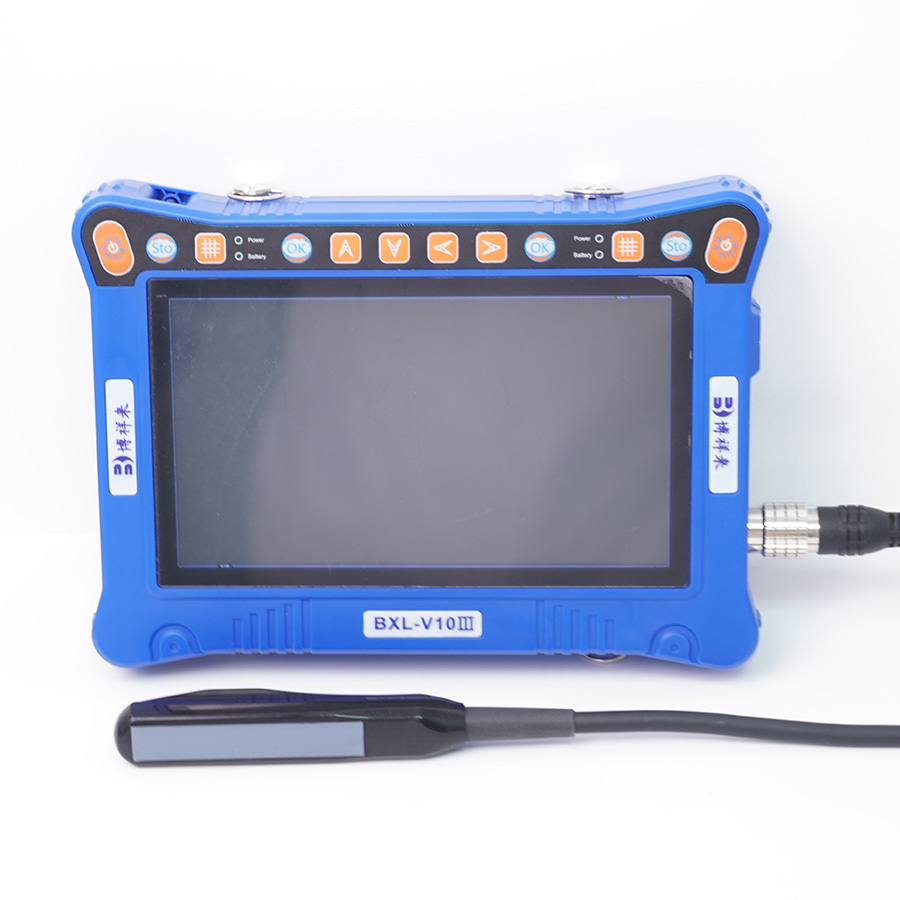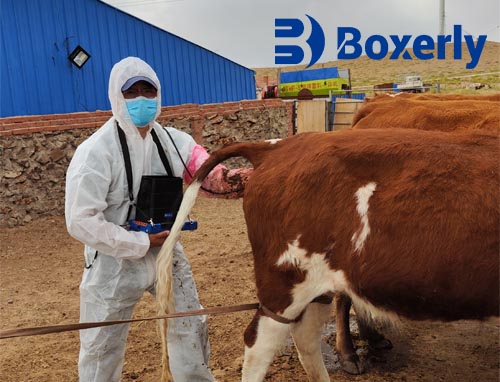Equine Ultrasound machines have become indispensable in modern veterinary care for horses. From detecting pregnancies to diagnosing injuries, these machines provide high-resolution imaging that helps veterinarians and horse owners make informed decisions about the health and care of their animals. In this article, we’ll explore what an equine ultrasound machine is, its key features, benefits, and why it is an essential tool in equine healthcare.

What is an Equine Ultrasound Machine?
An equine ultrasound machine is a specialized diagnostic tool that uses high-frequency sound waves to create real-time images of a horse's internal organs, tendons, ligaments, and reproductive system. This non-invasive technology allows veterinarians to look inside a horse’s body without surgery, making it a critical device for diagnosing a range of health issues, from soft tissue injuries to pregnancy.
Key Applications of an Equine Ultrasound Machine
Ultrasound machines have a variety of applications in equine healthcare. Some of the most common uses include:
1. Reproductive Management
Ultrasound technology plays a significant role in equine reproduction. With an equine ultrasound machine, veterinarians can detect pregnancies early, monitor fetal development, and even identify potential complications before they become serious. This allows for timely intervention, improving both the mare's and foal's chances of a healthy pregnancy and birth.
- Pregnancy Detection: Early pregnancy detection, usually as soon as 14-16 days post-conception, helps horse breeders manage breeding schedules effectively.
- Monitoring Fetal Health: Continuous monitoring of fetal development ensures the mare’s health and prepares for potential complications.
2. Musculoskeletal Diagnoses
Equine athletes like racehorses and show horses are prone to musculoskeletal injuries. An equine ultrasound machine is used to diagnose injuries in soft tissues, including tendons and ligaments. Whether it’s a strain, tear, or other damage, ultrasound technology allows veterinarians to assess the severity of an injury and determine the best treatment plan.
- Tendon and Ligament Evaluation: Tendon and ligament injuries are common in horses, and ultrasound can provide a detailed view of the affected area to aid in recovery strategies.
- Fracture Assessment: In some cases, ultrasound machines can be used alongside X-rays to assess fractures, especially in areas with soft tissue involvement.
3. Abdominal and Thoracic Examinations
Ultrasound is also effective for diagnosing conditions in the abdominal and thoracic cavities of horses. Whether it’s detecting colic, tumors, or fluid buildup, an equine ultrasound machine can provide critical insights into internal issues that may be affecting the horse’s health.
4. Cardiac Monitoring
Equine ultrasound machines can be used to assess the heart and its functionality. This is particularly important for racehorses or horses undergoing intense physical activity, as cardiovascular health is key to their performance and overall well-being.
Key Features to Look for in an Equine Ultrasound Machine
Choosing the right equine ultrasound machine is crucial for effective diagnosis and treatment. Here are some essential features to consider when purchasing one:
1. Portability
Veterinarians often need to travel to stables or remote locations to care for horses. A portable equine ultrasound machine is lightweight and easy to carry, making it perfect for on-site exams.
2. High-Resolution Imaging
Clear and detailed imaging is critical for accurate diagnoses. Look for a machine with high-resolution capabilities to capture precise images of soft tissues, organs, and reproductive structures. Real-time imaging ensures that veterinarians can immediately assess the condition without delay.
3. Durability
Horses are large, powerful animals, and the environments where they are housed can be rugged. An equine ultrasound machine needs to be durable and able to withstand tough conditions, including dust, moisture, and physical wear from daily use.
4. Multi-Probe Compatibility
Equine ultrasound machines often come with different probe options to perform a variety of exams. For instance, linear probes are ideal for tendon and ligament assessments, while convex probes are suited for abdominal and reproductive exams. Machines that support multiple probes offer more versatility for equine healthcare.
5. Long Battery Life
For veterinarians working in the field, a machine with long battery life ensures that they can perform multiple examinations without worrying about recharging. This is especially useful for remote locations or on large farms where access to power may be limited.
6. User-Friendly Interface
A machine with an intuitive and easy-to-use interface makes it simpler for veterinarians to conduct exams efficiently, especially in time-sensitive situations. Features like touchscreen controls and customizable settings can improve workflow and reduce examination time.
Benefits of Using an Equine Ultrasound Machine
The use of equine ultrasound machines provides a number of significant benefits to both veterinarians and horse owners, enhancing the quality of care and diagnosis. Here’s how:
1. Non-Invasive Diagnostics
Ultrasound imaging is a non-invasive method, meaning no surgery or invasive procedures are required to view a horse's internal structures. This reduces stress on the horse and lowers the risks associated with more invasive diagnostic methods.
2. Early Detection
With the help of an equine ultrasound machine, veterinarians can detect problems early, whether it's a reproductive issue, an injury, or an internal condition. Early diagnosis is critical for successful treatment and recovery, helping to prevent minor issues from becoming major health problems.
3. Improved Reproductive Success
For breeders, the ability to closely monitor a mare’s pregnancy and fetal development is invaluable. Early pregnancy detection, as well as the ability to monitor for potential complications, can improve the success rate of breeding programs and ensure healthier foals.
4. Enhanced Injury Management
Horses that suffer from soft tissue injuries can benefit from ongoing monitoring with ultrasound technology. Vets can track the healing process of tendons and ligaments over time, adjusting treatment plans as necessary for a faster, more effective recovery.
5. Cost-Effective Care
Investing in an equine ultrasound machine can save money over time. By providing accurate diagnoses quickly, it reduces the need for more expensive and invasive diagnostic tests, making it a cost-effective tool for both veterinarians and horse owners.
Where to Buy an Equine Ultrasound Machine
You can find equine ultrasound machines for sale through various sources, including:
Veterinary Equipment Suppliers: Reputable suppliers like KeeboMed or National Ultrasound offer a wide range of ultrasound machines tailored to equine care.
Manufacturer Websites: Buying directly from manufacturers ensures you receive the best warranty and customer support for your machine.
Online Marketplaces: Platforms like eBay and Alibaba offer new and used ultrasound machines at competitive prices. However, ensure you buy from reputable sellers and check the machine’s condition and warranty.
Conclusion
An equine ultrasound machine is an essential tool for veterinarians and horse owners alike. With its ability to provide clear, real-time images of a horse's internal structures, it allows for more accurate diagnoses, early detection of health issues, and improved treatment outcomes. Whether you’re managing a breeding program or caring for an injured racehorse, investing in a high-quality equine ultrasound machine is a smart decision that can improve the quality of care you provide.







